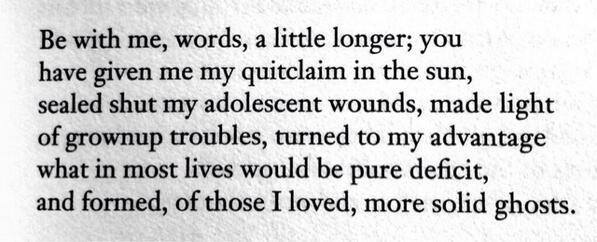“Postscript you trace colors the sky
Red-letter light fades is filed away
Sunburst fingers you raise
One last sigh of farewell. goodbye
ROXY MUSIC SUNSET
(C)Photograph of John Updike by Paul Moran
In 1977, at the age of 18, I studied under an artist by the name of Vito Sammartano, a man whose intellect and artistic simplicity I admired. He painted in basic color planes. He liked my work, and explained to me what he thought constituted High Art. My idea of High Art at the time was taking a hit of something and laying on the paint real thick.
I loved the idea of Pop Art, as Andy Warhol and his peers had made it all seem like great subversive fun. However, the greater the degree of abstraction the less I felt confident of an artists worth particularly my own.
My art instructor told me that many of the Abstract Expressionists were plagued by doubt and often manic-depression, possibly worsened by the mercurial nature of their work. He spoke of tragic figures like Jackson Pollock and Mark Rothko, and explained that their art was created and interpreted based largely upon intuition. Their own inflated or degraded appraisal of the quality of their own work was not an absolute and must necessarily have been viewed through the shifting prism of their own erratic moods.
I had experienced those feelings myself. At the end of the year I had completed my most ambitious work and my mentor enthusiastically showed it off to other professors. He told me I had to save it. He then proceeded to spray it with a clear protective acrylic. I had not told him it was ink and as he sprayed, the colors ran down the canvas. Vito looked sheepish. I told him not to worry, as I was already sick of looking at it and felt inwardly pleased to watch it melt without the aid of drugs.
If I had pursued this line of work, I’m sure I would have gone for the sensational and aspired to something on the order of the artwork of perhaps Damian Hirst. It may have caught fire and become lucrative or more likely devolved into yet another tiresome act of meaningless self-promotion in the art world. I wanted to create something in which I too could feel confident of its inherent artistic value; one that required no defense by me of my own inscrutable talent.
I found common historical artifacts more compelling than visual imagery. To some the collection presented here is merely ephemera. For me it is an historical and artistic precedent. There is an intangible value in this particular assemblage. This is a life. This is a time capsule. This is Kula Art.
I’m intrigued by the idea of relics, whether in a cathedral, the Smithsonian or even at Graceland. I firmly believe that much of the value derived from art throughout the ages is due to its historical placement. A perfect re-creation will never be defined as worthy of the original. It is a work of art’s objective biography, it’s provenance as a relic that that moves the action of the auction.
This project is also inspired by the philosophy, artistic detachment and the role of random opportunity in the work of Brian Eno whom I was lucky to meet at the Institute of Contemporary Art in Boston many years ago. Precedents for this project are seen in the works of Joseph Bueys (The Felt Suit), Magritte (“This is Not a Pipe) Joseph Cornell (Manual of Marvels) Marcel Duchamp (Urinal), to name a few.
I have confidence in the merit of the Kula Art Project due to the creative life of the author and the inherent biography of everyday objects, and not because of my own limited role in their organization. Paul Moran
I cant bear to finish things, beyond a certain point they get heavy. Theres something so dead about a finished painting. -John Updike
The Final Calendar and The Hope for More Time

